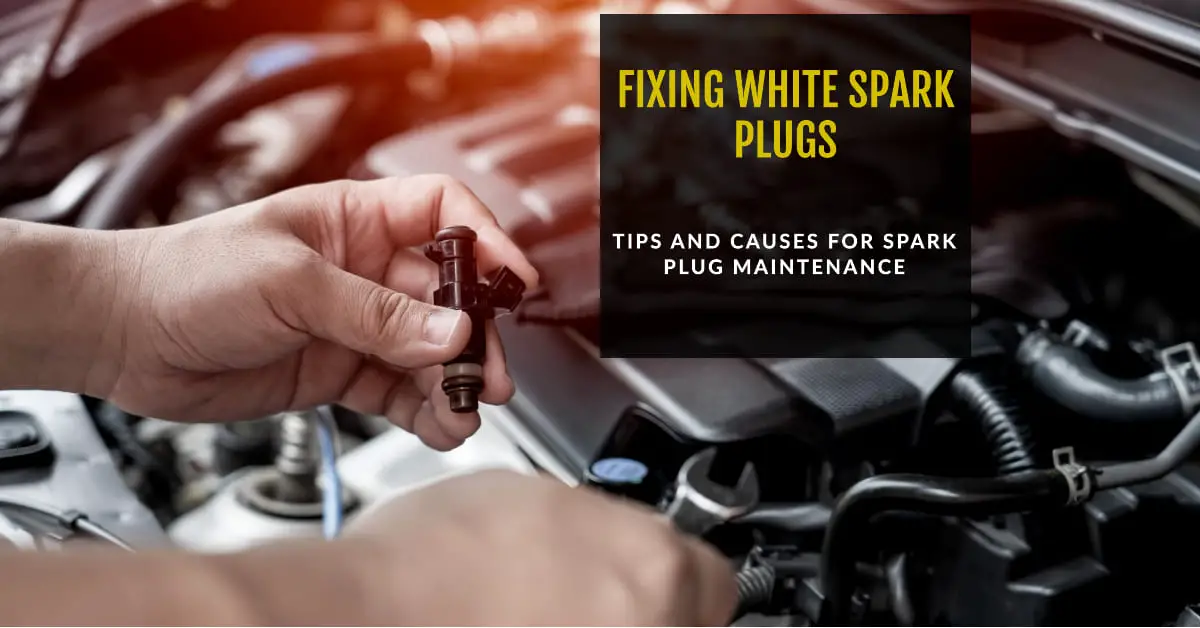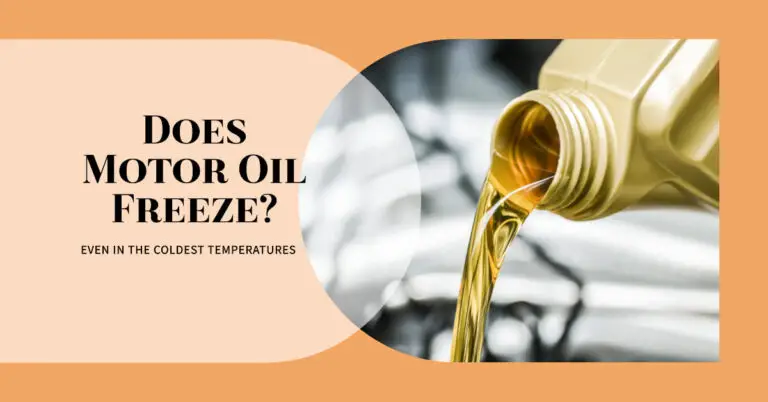Spark Plugs Tips Are White? (Fixes & Causes)?

Have you taken a peek at your spark plugs recently and noticed white powdery deposits on the ceramic insulator tip? At first glance this may seem harmless, but excessive buildup of white substances like coolant, oil, and fuel additives can indicate problems.
What causes white deposits on spark plugs? White deposits form on spark plugs from normal electrical erosion over time, coolant leaks burning onto the ceramic, oil leaking into the combustion chamber, fuel additive breakdown, and severe detonation events melting the insulator tip. Figuring out the root cause is key to addressing performance issues.
In this 3,000+ word guide, we’ll cover:
- Normal vs problematic white spark plug deposits
- 5 main reasons you may find white stuff on spark plug ceramic tips
- How to diagnose the cause of white plug deposits
- 3 methods to clean buildup off spark plugs
- When to call a certified mechanic about persistent issues
Knowing how to inspect your spark plugs and identify common deposit issues can help nip engine problems in the bud. Let’s dive in!
Table of Contents
What Does White Powder on Spark Plugs Mean? Normal vs Problem Signs
Seeing a little bit of white powder on your spark plugs is normal over their lifespan. This happens through typical electrical wear and tear. Small hairline cracks in the insulator tip allows tiny amounts of metal from the center electrode and shell to oxidize when exposed to air.
The high voltage spark jumping this gap causes tiny particles to fritter off. Over time, usually between 10,000 to 100,000 miles, enough builds up to leave a light white residue. This oxidized eroded material is mostly harmless, but can eventually interfere with optimal sparking or lead to misfires if enough accumulates.
However, heavy white buildup exceeding a small dusting is not normal and indicates problems. The color, texture, location on the plug, and which cylinders are affected provides clues into various engine issues. When multiple plugs show deposits, it points to systemic problems like coolant contamination, defective valve guide seals, failing head gaskets, or bad fuel additives rather than singular cylinder events.
Catching these issues early by inspecting spark plug deposits prevents further damage down the line. Misinterpreting heavy white substances as normal wear could allow problems to spiral. Let’s explore the most common reasons you may find white stuff on your spark plug ceramic.
5 Reasons Why Your Spark Plugs Have White Stuff on Them
There are five main issues that can leave white residue on your spark plugs:
- Coolant leaks burning onto the ceramic tip
- Oil leaking into the combustion chamber
- Gasoline additives breaking down into mineral deposits
- Severe knock/detonation damage
- And normal wear over 100,000+ miles
Detecting patterns based on which cylinders are affected provides strong clues into the root cause. Let’s explore them in more detail:
1. Burning Coolant Deposits
The most serious cause of white stuff coating your spark plugs stems from burning coolant leaks. When a head gasket seal fails, small holes can form allowing antifreeze/coolant to mix into the engine cylinders. Or if you have cracks in an aluminum engine block or corroded coolant channels, similar mixing occurs.
As the coolant enters the combustion chamber, it burns and evaporates during the power stroke. This leaves white fluffy powder composed of silicates and phosphates originating from antifreeze ingredients designed to prevent corrosion.
Over time, this white goopy coating can spread over the spark plug insulator tip and prevent your engine from starting altogether! Catching this early prevents hydrolock damage. Replacing damaged head gaskets, sealing cracked blocks, or addressing leaky coolant lines resolves it.
Key signs of burning coolant:
- White cottage-cheese like deposits coating all or some plugs
- Sweet maple syrup smell from exhaust
- Overheating engine
- Coolant levels rapidly falling
- Fail oil analysis tests detecting silicates/phosphates
Skipping oil changes extends this risk too by allowing excess blow-by gases laced with coolant into the crankcase. This further contaminates engine oil masking itself as white sludge around plug wells upon inspection. Monitor your coolant condition levels vigilantly.
2. Oil Residue Burning On
While coolant burning onto spark plugs should trigger alarm, oil leaking into engine cylinders happens more commonly. As engines accumulate mileage, valve guide seals securing the valve stems can shrink. This enables a small amount of motor oil to leak during the compression and combustion stroke. Failing piston rings have similar effects.
Mostly this oil leak-by causes blue-ish gray deposits. But over time, the intense heat from burning can calcify the oil into hard glossy deposits with a white, cream, or yellowish color. This baked-on residue is difficult to remove and continues interfering with engine operation.
Replacing worn valve guide seals restores protection against oil entering the cylinder. New piston rings also re-seal the combustion chamber. Adjusting valve lash if excessive can temporarily minimize the issue too. If you spot these early, oil additive cleaners dissolving deposits combined with new seals avoids overhauling the whole engine short-term.
Clues pointing to burning oil deposits on spark plugs:
- Glossy yellow/white glazing on insulator tips
- Oil leaks near valve covers
- Blue-gray exhaust smoke at cold startup
- Oil consumption exceeds 1 qt per 1,000 miles
- Compression test reveals low cylinder pressure
3. Gasoline Additive Buildup
Many top-tier gas stations advertise special “detergent” additive packages. These extra ingredients help clean fuel injectors, intake valves, ports for improved performance and fuel economy. However in some cases they can breakdown upon combustion into white mineral deposits coating spark plugs.
In particular, tetraethyl lead, phosphorus, calcium, sodium, and manganese elements act as stabilizers, corrosion inhibitors, lubricity enhancers. But burned byproducts can build-up on hot engine components over months of driving. This leaves white chalky to yellow phosphate crystals interfering with optimal sparks, especially around side wire electrodes.
Switching to quality top tier gasoline without harsh deposit-forming additives for a few tanks cleans this up. Though avoiding fuel stabilizers is not practical long-term for protecting systems from aging effects during storage. Consider trying different additive formulations if one brand frequently leaves white junk around your plugs’ side electrodes despite proper engine conditions.
Signs of additive breakdown interfering with spark plugs:
- White material around side wire electrode gap
- Performance worsens over first 10 minutes until plug reaches operating temp
- Otherwise cannot trace source of deposits from common causes
4. Detonation or Pre-ignition Damage
Severe detonation incidents can instantly damage spark plugs in some cases. Both pre-ignition and nitrous backfires produce intense heat blasts exceeding 3,500°F that melts ceramic insulator tips in milliseconds. This hot molten material explodes down the sides then recrystallizes into rough white deposits as it cools.
Detonation roughens up the electrode’s firing end through intense pressure spikes and temperatures melting spark plug material. The white junk left over resembles solidified splatter with a crusty texture when it hardens on the ceramic. This differs from chemical contaminants dissolving during heating cycles into a softer cottage cheese consistency.
You may also spot melted electrodes bent sideways if knocking bent the ground strap. Replacing the damaged plugs reduces the likelihood of new ones failing quickly again. But the root detonation causes from hotspots, incorrect timing, bad gas, etc must be addressed too or issues reappear.
Evidence that detonation melt damage caused white buildup:
- One spark plug damaged, others look fine
- Rough crusty white texture resembles melted material
- Knock/detonation sensor activity increased
- Timing off, failing coil pack, bad octane fuel possible causes
5. Normal Wear Over 100,000+ Miles
As highlighted at the beginning, white deposits eventually accumulate through normal electrical wear and tear. After 100,000 miles it is common to find small white dusting on most plugs even with no underlying issues present. This oxidized eroded metal builds up slowly through microscopic gaps in hairline insulator cracks and spark ejections.
While this creeps up over long intervals, keeping fresh ignition components maintains maximum engine health. Replacing worn spark plugs every 50,000 to 100,000 miles keeps electrical systems running optimally. The cost of new plugs beats suffering misfires, rough idle, bogging that accelerates cylinder damage over time. Think of white buildup as a check engine light warning to refresh old ignition components.
Cluesexcessive white deposits came from typical aging vs serious issues:
- High mileage vehicle over 100k miles
- Dusting crumbles off easily with brush – no thick glazing
- No other symptoms point to coolant/oil leaks or engine damage
- Due for spark plug replacement based on intervals
- All cylinders affected relatively evenly
How to Diagnose the Cause of White Spark Plug Deposits
Figuring out why white material is coating your spark plugs is critical before blindly cleaning them off. Because if an underlying issue exists with coolant mixing, engine oil burning, or additive chemistry – the deposits quickly return and compound engine damage.
Use this systematic process to trace the source:
1. Check for external fluid leaks
Scan under the hood for signs of oil around gaskets and seals. Inspect radiator coolant overflow tank level and ground below for new antifreeze stains indicating leaks. Top up any low reservoirs.
2. Perform cylinder compression test
Use a screw-in compression tester gauge to measure cylinder sealing pressure. Typically you want all at 150+ PSI and under 10% variance between them. Weak measurements under 120 PSI suggest head gasket failure. Re-test adding a teaspoon of oil in holes to check for ring wear.
3. Monitor knock/detonation sensor activity
Many cars feature engine detonation/knock sensors listening for abnormal combustion noise signalling preignition events. Use an OBD2 Bluetooth scanner logging ignition timing advance correction trims. Verify if actual timing aligns with specified ranges under load. If advancing timing to suppress incidents, detonation likely damaged ceramic tips.
4. Physically cut open old spark plug
Sometimessecting old fouled spark plugs in half reveals inner secrets. You can distinguish white cottage cheese coolant deposits, yellow varnish oil burning on, or melted electrode metal from pre-ignition damage. It provides visual proof useful determining root causes – though doesn’t help clean current plugs still installed.
How to Clean White Stuff Off Spark Plugs (3 Methods)
Don’t scrape white deposits off by force with hard tools. This further damages the ceramic insulating properties crucial for withstanding combustion heat and 45,000 volt charges. Chipping this protective surface risks early failure.
Instead use these proven techniques removing contaminants while keeping structural integrity intact:
1. Spark Plug Cleaning Brush
Dedicated spark plug cleaning brushes with stiff bronze or steel bristles dissolve all sorts of dirt, oil, and white deposits off ceramic. Dip the brush in solvent like brake cleaner then scrub contaminated sections of insulator tip in a twisting motion. This restores cleanliness for further service.
2. Ultrasonic Cleaning Tank
Immersing fouled spark plugs in an ultrasonic bath allows high frequency sound waves to vibrate grime free. Most mechanic shops and auto parts stores rent these machines. Lower plugs into solvent tank and run cycle. It effortlessly cleans out white contamination from intricate crevices leaving pristine.
3. Media Blaster
Commercial-grade soda blasters or walnut shell abrasive cabinets efficiently cleans without surface damage. High pressure air accelerates baking soda particles to gently cut into deposits. Alternative walnut shells offer more aggressive material removal. Media blasting meticulously restores plugs to fresh out the box condition.
Pro tip: Try hot water steam cleaning spark plugs before media blasting. Heat helps expand and dissolve contaminants from the ceramic substrate through brief exposure alone in many cases.
Conclusion
Finding white stuff on your spark plugs may seem perplexing at first. But learning to distinguish normal electrical wear from problematic deposits prevents bigger issues down the road.
Most often, heavy white substances indicate coolant, oil, or additive leaks making their way into combustion chambers. Detonation can also instantly leave melted ceramic residue.
Catching problems early keeps them cheap. Diagnose root causes based on cylinder patterns before attempting to clean plugs. Restore compression and seal fluid leaks properly. Then replace damaged spark plugs and keep fresh through 20k-60k mile intervals. Take care of your engine and ignition components, and they’ll take care of you!
For persistent spark plug contamination problems, connect with a certified mechanic specializing in engine performance and electrical systems. They have the tools and know-how assessing underlying issues so you can get back on the road.







